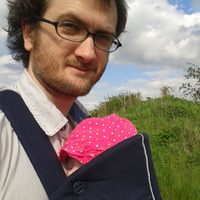Tim Shephard
The University of Sheffield, Music, Faculty Member
The chapters in this volume explore the relationship between music and art in Italy across the long sixteenth century, considering an era when music-making was both a subject of Italian painting and a central metaphor in treatises on the... more
The chapters in this volume explore the relationship between music and art in Italy across the long sixteenth century, considering an era when music-making was both a subject of Italian painting and a central metaphor in treatises on the arts. Beginning in the fifteenth century, transformations emerge in the depiction of music within visual arts, the conceptualization of music in ethics and poetics, and in the practice of musical harmony. This book brings together contributors from across musicology and art history to consider the trajectories of these changes and the connections between them, both in theory and in the practices of everyday life. In sixteen chapters, the contributors blend iconographic analysis with a wider range of approaches, investigate the discourse surrounding the arts, and draw on both social art history and the material turn in Renaissance studies. They address not only paintings and sculpture, but also a wide range of visual media and domestic objects, from instruments to tableware, to reveal a rich, varied, and sometimes tumultuous exchange among musical and visual arts and ideas. Enriching our understanding of the subtle intersections between visual, material, and musical arts across the long Renaissance, this book offers new insights for scholars of music, art, and cultural history.
Research Interests:
Anne Leonard & Tim Shephard, 'Introduction' Amy Gillette, 'Depicting the sound of silence: angels’ music and “angelization” in medieval sacred art' Anne Leonard, 'To themselves: music in the art of Henri Fantin-Latour and Odilon Redon'... more
Anne Leonard & Tim Shephard, 'Introduction'
Amy Gillette, 'Depicting the sound of silence: angels’ music and “angelization” in medieval sacred art'
Anne Leonard, 'To themselves: music in the art of Henri Fantin-Latour and Odilon Redon'
Suzanne Singletary, 'Wagner versus Wagnerism: the case of the Gesamtkunstwerk or will the real Wagner please stand up'
Emily Fi. Gephart, 'In search of pictorial music: synaesthesia and embodied experience in Arthur B. Davies’s murals for Lillie Bliss'
Melissa L. Mednicov, 'How to hear a painting: looking and listening to Pop art'
Amy Gillette, 'Depicting the sound of silence: angels’ music and “angelization” in medieval sacred art'
Anne Leonard, 'To themselves: music in the art of Henri Fantin-Latour and Odilon Redon'
Suzanne Singletary, 'Wagner versus Wagnerism: the case of the Gesamtkunstwerk or will the real Wagner please stand up'
Emily Fi. Gephart, 'In search of pictorial music: synaesthesia and embodied experience in Arthur B. Davies’s murals for Lillie Bliss'
Melissa L. Mednicov, 'How to hear a painting: looking and listening to Pop art'
Research Interests:
The private studioli of Italian rulers are among the most revealing interior spaces of the Renaissance. In them, ideals of sober recreation met with leisured reality in the construction of a private princely identity performed before the... more
The private studioli of Italian rulers are among the most revealing interior spaces of the Renaissance. In them, ideals of sober recreation met with leisured reality in the construction of a private princely identity performed before the eyes of a select public. The decorative schemes installed in such rooms were carefully designed to prompt, facilitate and validate the performances through which that identity was constituted. Echoing Helicon reconstructs, through the (re)interpretation of painted and intarsia decoration, the role played by music, musicians and musical symbolism in those performances. Drawing examples from the Este dynasty - despotic rulers of Ferrara throughout the Renaissance who employed such musicians as Pietrobono, Tromboncino and Willaert, and such artists as Tura, Mantegna and Titian - author Tim Shephard reaches new conclusions about the integration of musical and visual arts within the courtly environment of renaissance Italy, and about the cultural work required of music and of images by those who paid for them.
